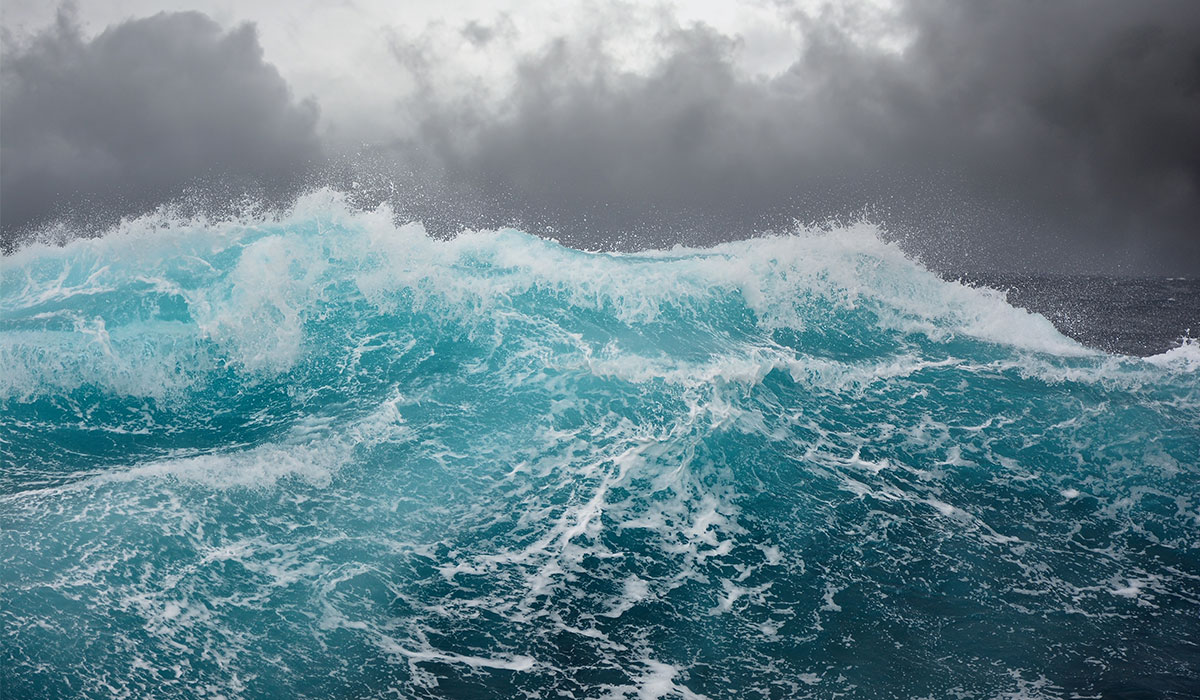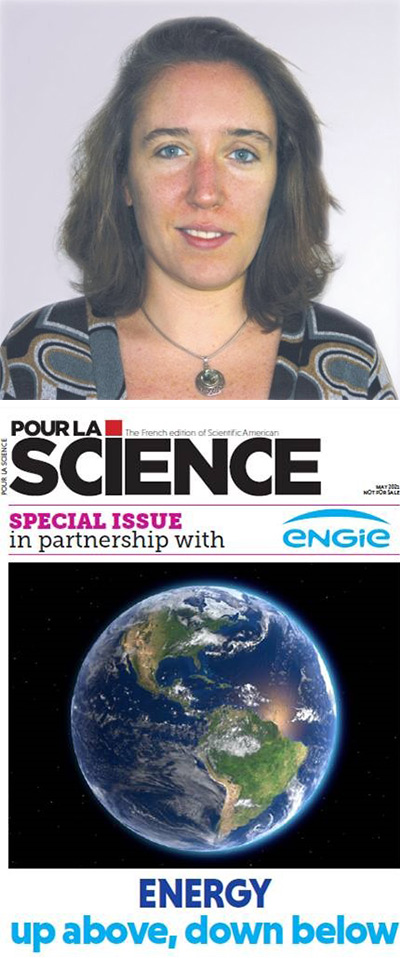

Let’s just reflect for a moment on the movement of the waves, the incessant ebb and the flow of the tides... “What is the ocean? A prodigious force wasted. How stupid is the earth, to make no use of the ocean!”, Victor Hugo lamented in Ninety-Three (1874), but his complaint is no longer relevant today as the sea has become a vital ally in our struggle to achieve a successful energy transition.
In fact, according to the European Commission, the oceans could
potentially deliver 100 megawatts (MW) in 2025 and 1 gigawatt (GW) by 2030,
which is more than a nuclear reactor! But how do we go about harnessing this
energy? The answer depends on its source i.e., tidal power, wave power, osmotic
power or thermal energy.
The
combined gravitational forces of the Sun, the Moon and the Earth’s rotation
create tides, which in turn result in tidal streams or tidal currents (that can
be very powerful) and variations in sea level. This energy can be harnessed and
converted into electricity. Tidal currents vary periodically, moving first in
one direction and then another according to a predictable rhythm that is
specific to each location. As a result, it is possible to forecast energy
availability in the long term. Many different designs of tidal turbines are currently
in operation generating from 0.2 to 2.5 MW, all of which are close to reaching
the market. The different types include axial and radial flow hydraulic
turbines and tidal kite turbines (in which the turbine is suspended from a sort
of submerged kite). Some are installed in the sea, whereas other smaller models
are used in rivers and estuaries.
The
theoretical potential energy of tidal power of just four European countries
(the United Kingdom, Ireland, Denmark and Norway) has been estimated at
approximately 350 terawatt-hours per year (TWh/year) and for Asia and Oceania
it is in excess of 9,000 terawatthours. As a reminder, the electricity
consumption of the 28 countries that comprised the European Union in 2019 was
3,239 TWh. Swedish company Minesto - with which ENGIE has
joined forces through its research centre ENGIE Laborelec - opted
for the tidal kite solution. The project’s main objectives were to design the
submersible system, minimise its environmental impact and reduce costs in order
to be more competitive.
In addition
to currents, tides are also characterized by rising and falling water levels,
which means it is possible to use a dam, a dyke or any other form of barrier to
extract the power generated by the difference in height between high and low
tide. The energy is converted by turbines situated in the dam. Several tidal
power stations are already in activity around the world, notably in France (240
MW), Canada (20 MW), China (5 MW) and South Korea (254 MW). Worldwide, the
theoretical potential energy is estimated at 80 GW, however this technology
requires large investments and its environmental impact needs to be carefully
examined.
When the
wind blows over the oceans, part of its energy is transferred to the waves it
creates. Wave energy converters are devices that harness this energy that
varies from one season to another and which is only available for short periods
of time. We can distinguish between nine families of devices capable of
converting this kinetic energy into electricity. In Porto de Pecém
(northeastern Brazil), ENGIE has taken
part in the installation of two point absorbers, floating structures connected
to the land by metallic arms that activate hydraulic pumps as they rise and
fall. Other examples include an oscillating water column, a sort of vertical
piston activated by the movements of the waves that has been tested recently
off the coast of Bilbao and which is part of the Opera project financed by the
European Union and supported by ENGIE.
There are
currently more than 100 pilot projects and demonstrators with a capacity of between
0.125 and 1 MW. For several countries in the north and south of Europe that
boast long stretches of coast, the theoretical potential energy is an estimated
2,628 TWh/year, whereas for Asia and Oceania it reaches 12,000 TWh/year.
But even if
the sea is calm, there is still the ocean’s thermal energy to be exploited. The
basic principle is as follows: warm surface water passes through a heat
exchanger where its heat vaporises a working fluid (or the seawater itself is
evaporated) and the expanding vapour is used to power a turbine. Deeper cold water
is then used to condense the vapour. OTEC (Ocean Thermal Energy Conversion) technology
is only pertinent in subtropical zones where the difference in temperature between
the surface and the depths is greater than 20° C. Several hurdles remain to be
overcome, notably the size of the hydraulic pipe network - a 100 MW plant would
require 1,000 m of cold water pipes measuring some 10 metres in diameter! -, as
well as improving heat exchanger efficiency.
The power
of the oceans can also be used for cooling buildings. Seawater Air Conditioning
makes use of the difference in temperature between shallow and deep water. The
advantages are twofold – it is both economical and environmentally friendly -
because not only does SWAC replace traditional air-conditioning systems, it
reduces the corresponding electrical consumption by up to 80 %.
ENGIE’s Thassalia project in Marseille is a good example. A seawater heating and cooling network provides the connected buildings with a rate of renewable energy use in excess of 75 % and guarantees competitive and stable tariffs. Water drawn out of the port at a depth of 7 metres is directly fed through reversible heat pumps and high-efficiency chilling units; the installation covers the needs of 600,000 m2 of buildings in the Euroméditerranée business district.
The
Thassalia project in Marseille (France) is a seawater district heating and
cooling system that services 600,000 m2 of buildings. |
The final source of marine energy is osmotic power that results from the difference in salt concentration between two liquids. Two types of technology are currently being studied:
Notwithstanding
the fact that these methods are still in their infancy and many challenges remain
to be faced, the potential capacity of osmotic power is an estimated 647 GW.
ENGIE (through its subsidiary Tractebel Energia) together with Coppe research
centre at the Federal University of Rio de Janeiro, has taken part in a pilot
project to develop a small-scale membrane.
The diversity of marine energy outlined above is promising. More reliable than sun or wind power and with a high potential in both Europe and worldwide, it is likely that it will make an important contribution to the new energy mix that will result from the energy transition. To this end, we have to wait until these technologies are more commercially mature and competitive, whilst studying their environmental impact in order to assure that they are sustainable in the long term. The ocean will then no longer be “a prodigious force wasted”.
This article was writen by :
Fiona Buckley - Senior Expert and Project Manager at ENGIE Lab Laborelec